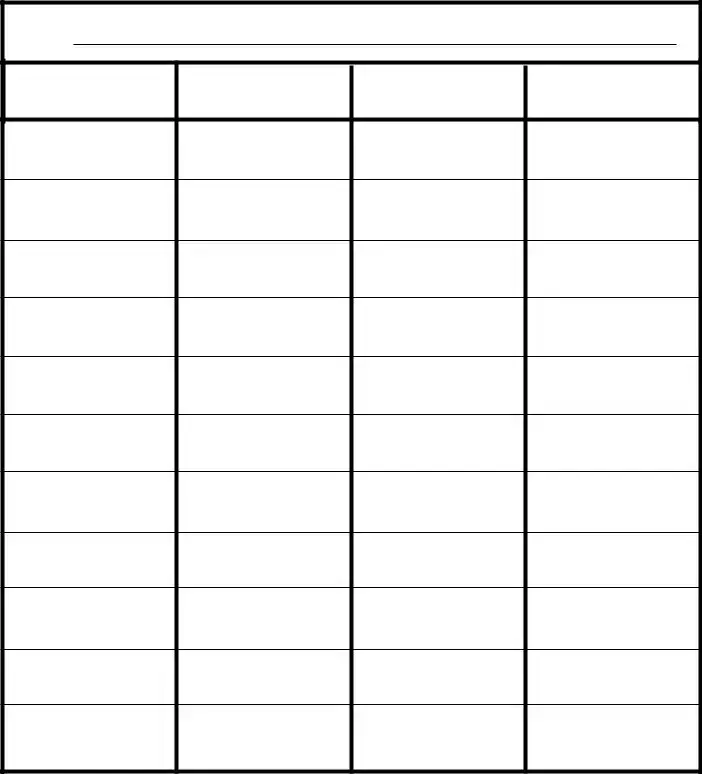What is the purpose of the Four Column Chart form?
The Four Column Chart form is designed to help individuals organize information in a structured manner. By dividing information into four distinct columns, users can easily categorize and compare different aspects of a topic. This format is particularly useful for brainstorming, planning, or analyzing various subjects, allowing for clarity and efficiency in thought processes.
How do I fill out the Four Column Chart form?
To fill out the form, start by writing your name and the date at the top. Next, you will need to create headings for each of the four columns. These headings should reflect the categories or themes relevant to your topic. After establishing the headings, you can begin adding details under each column. Ensure that the information is concise and relevant to the headings you have chosen.
Can I use the Four Column Chart for any topic?
Yes, the Four Column Chart can be applied to a wide variety of topics. Whether you are working on a school project, planning a business strategy, or analyzing historical events, this format is adaptable. The flexibility of the chart allows it to serve different purposes, making it a valuable tool for both academic and professional settings.
What types of headings can I use for the columns?
The headings for the columns should be tailored to fit the specific topic you are addressing. For instance, if you are analyzing a business, you might use headings like "Strengths," "Weaknesses," "Opportunities," and "Threats." Alternatively, for a historical event, you could use "Date," "Event," "Impact," and "Key Figures." The choice of headings will significantly influence the effectiveness of your chart.
Is there a specific format I should follow when adding details to the columns?
While there is no strict format for entering details, it is advisable to keep your entries clear and concise. Bullet points or short phrases can enhance readability. Each detail should directly relate to the corresponding heading to maintain organization. This approach helps in quickly identifying key information at a glance.
How can the Four Column Chart assist in decision-making?
The Four Column Chart can facilitate decision-making by providing a visual representation of information. By organizing data into categories, individuals can easily assess different factors and their implications. This organized view allows for better comparisons and evaluations, ultimately leading to more informed decisions.
Can I modify the Four Column Chart to suit my needs?
Absolutely. The Four Column Chart is meant to be a flexible tool. You can adjust the number of columns, change the headings, or even add additional rows as needed. The key is to ensure that the modifications still serve the purpose of organizing and clarifying the information relevant to your topic.
Is there a limit to how much information I can include in each column?
While there is no formal limit to the amount of information you can include, it is essential to prioritize clarity. Overloading a column with too much information may defeat the purpose of the chart. Aim for a balance where enough detail is provided to convey the necessary information without causing confusion.
Where can I find examples of completed Four Column Charts?
Examples of completed Four Column Charts can often be found in educational resources, textbooks, or online educational platforms. Many websites dedicated to teaching strategies may provide templates or samples. Additionally, reviewing completed charts in your subject area can offer insights into effective organization and presentation of information.

